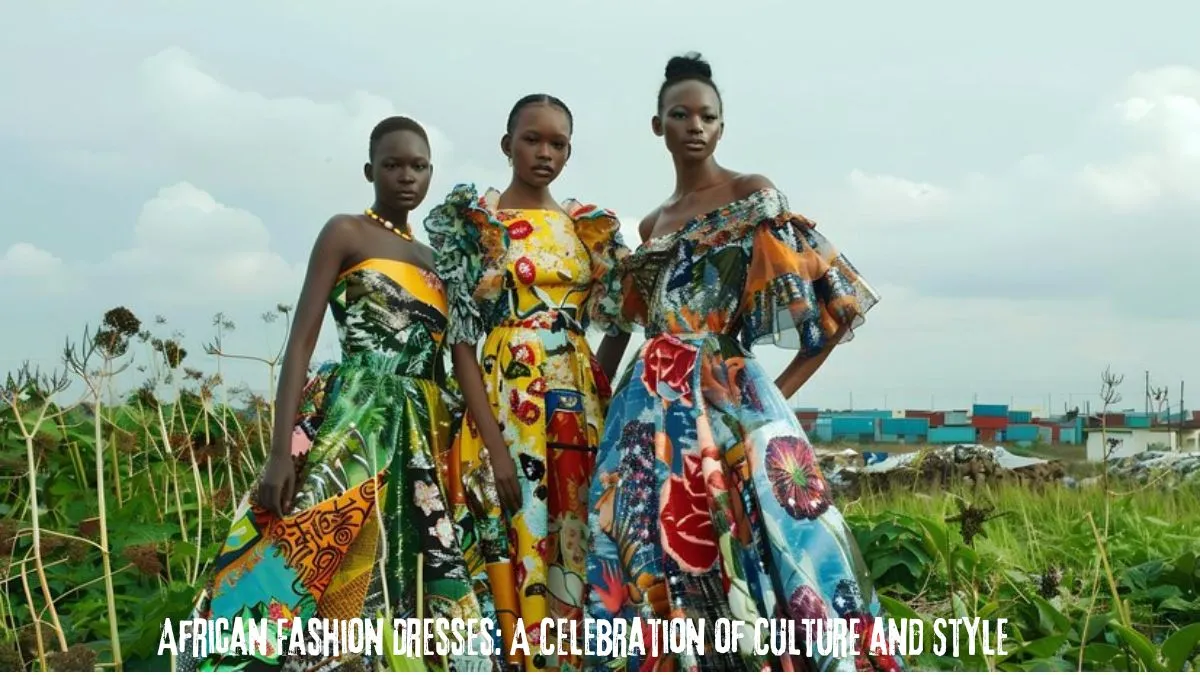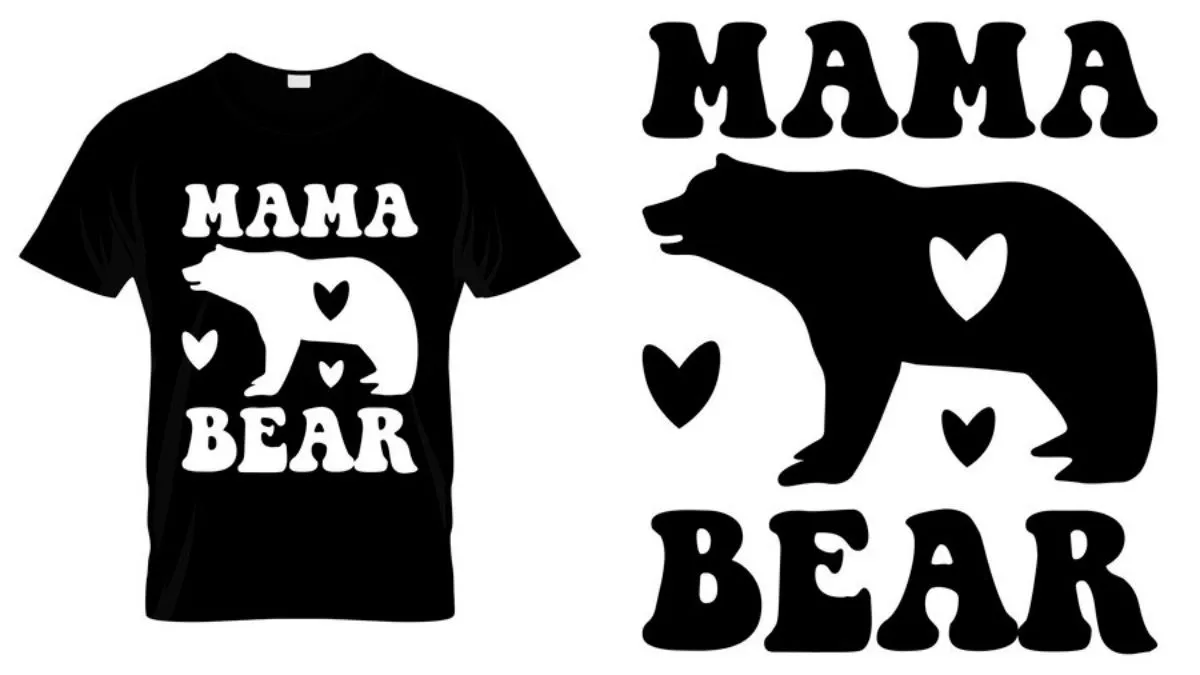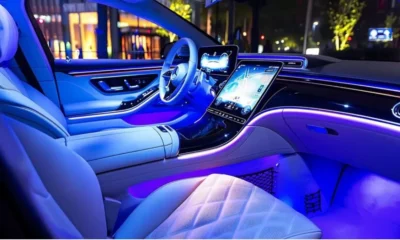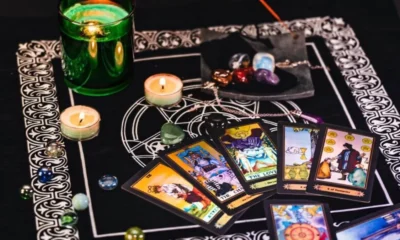Fashion
African Fashion Dresses: A Celebration of Culture and Style

Introduction to African Fashion Dresses
African fashion dresses have evolved over the centuries, influenced by rich traditions and cultural heritage across the continent. They showcase vibrant colors, intricate patterns, and bold designs that resonate with the history, culture, and lifestyle of Africa’s diverse ethnic groups. Today, African fashion dresses are more than just clothing; they represent identity, pride, and connection to one’s roots. From casual wear to formal attire, these dresses suit every occasion and continue to inspire designers worldwide.
The Rich History of African Fashion
The roots of African fashion run deep, going back to ancient times when textiles were woven from natural fibers like cotton, silk, and raffia. Each region of Africa has its unique style, with variations in the types of fabric, color choices, and design elements. For instance, West African countries like Nigeria and Ghana are known for their intricate Ankara prints, while East African regions are recognized for their beautiful kanga and kikoi fabrics.
Traditional African fashion wasn’t just about aesthetics. The colors, patterns, and symbols in the garments often conveyed messages, representing everything from social status to spiritual beliefs. Over time, these traditional outfits have evolved into modern fashion statements, blending ancient styles with contemporary trends.
The Influence of African Fabrics
African fashion dresses are primarily distinguished by the use of specific fabrics, each carrying its cultural significance. The most notable are Ankara, Kente, and Dashiki fabrics.
- Ankara: Also known as “African wax prints,” Ankara is one of the most popular fabrics used in African fashion. Known for its bold and vibrant patterns, Ankara is commonly worn in West African countries. This fabric is versatile, making it a perfect choice for dresses, skirts, and tops.
- Kente: Originating from Ghana, Kente cloth is a handwoven silk and cotton fabric with intricate geometric patterns. Each pattern and color in a Kente cloth has a specific meaning, often symbolizing themes like royalty, wisdom, or unity. It is traditionally worn for important events, such as weddings or festivals.
- Dashiki: Dashiki fabric is characterized by its loose-fitting design and elaborate embroidery around the neckline. It’s widely worn in West Africa and symbolizes freedom and cultural pride. While originally worn as a loose tunic for men, modern Dashiki designs have expanded to include dresses for women.
Styles and Designs for Every Occasion
African fashion dresses are designed to be versatile, suiting any occasion—whether casual, formal, or traditional. Here are a few popular styles:
- Maxi Dresses: Long and flowing, African maxi dresses often feature bold Ankara or Kente prints. These dresses are perfect for formal events, parties, or even casual outings, depending on the cut and style. Their versatility makes them a staple in many African wardrobes.
- Wrap Dresses: The wrap dress is a popular choice for women seeking elegance with comfort. Made from brightly colored African fabrics, these dresses provide a flattering fit for every body type. They are ideal for semi-formal occasions, offering both style and ease of movement.
- A-line Dresses: A-line dresses are known for their simplicity and sophistication. African prints, especially Ankara, add an extra layer of vibrancy to this timeless silhouette. These dresses are great for casual gatherings or professional settings, combining elegance with cultural flair.
- Off-Shoulder Dresses: For a more modern and bold look, African off-shoulder dresses are trending. They emphasize femininity while showcasing beautiful African patterns. Perfect for a summer wedding or a night out, these dresses blend traditional fabrics with contemporary cuts.
The Role of African Fashion in Global Trends
African fashion has taken the global fashion scene by storm in recent years. Designers from all over the world have drawn inspiration from African prints, patterns, and styles. The rise of Afrofuturism, which blends African culture with modern technology and futuristic elements, has further catapulted African fashion into the global spotlight. Fashion shows, such as the Lagos Fashion Week and South African Fashion Week, have showcased African designers and brought African dresses to an international audience.
Celebrities and influencers have also embraced African fashion, wearing Ankara and Kente dresses on red carpets, during photo shoots, and at high-profile events. This has further contributed to the rise of African fashion dresses in mainstream culture.
Sustainability and Ethical Fashion
In recent years, there has been a growing movement toward sustainability and ethical fashion, with African designers leading the charge. Many African fashion brands prioritize locally sourced materials, traditional craftsmanship, and fair labor practices. This approach not only promotes ethical fashion but also supports local communities and preserves African cultural heritage.
Additionally, African fabrics like Ankara and Kente are often made using traditional, eco-friendly techniques that have been passed down through generations. By embracing these methods, African designers are contributing to the global push for more sustainable and ethical fashion choices.
Celebrating African Fashion with D’IYANU
Brands like D’IYANU have played a significant role in promoting African fashion on a global scale. Offering a wide range of African-style dresses, D’IYANU blends traditional African prints with contemporary designs, making these pieces accessible to a wider audience. Whether you’re looking for a casual day dress or something more formal, D’IYANU has something for every occasion.
Their collection includes everything from elegant maxi dresses to chic off-shoulder styles, all crafted from authentic African fabrics. What sets D’IYANU apart is its commitment to celebrating African heritage while creating modern, stylish, and affordable fashion options. Each piece tells a story of cultural pride, making African fashion more than just a trend—it’s a statement of identity.
The Future of African Fashion Dresses
The future of African fashion is bright, with designers continuing to innovate and push boundaries. As more people worldwide embrace African prints and styles, we can expect to see African fashion dresses becoming even more prominent in global fashion trends. Collaboration between African designers and international fashion houses will likely continue to grow, resulting in exciting new collections that honor Africa’s rich cultural history while catering to modern tastes.
In addition, as sustainability becomes more important in the fashion industry, African designers will continue to lead the way with their use of traditional, eco-friendly fabrics and ethical production practices.
Conclusion
African fashion dresses are a testament to the continent’s rich cultural heritage and creative spirit. From the vibrant patterns of Ankara to the intricate designs of Kente, these dresses offer a unique blend of tradition and modernity. Whether you’re attending a wedding, a formal event, or a casual gathering, African fashion dresses provide a stylish and meaningful way to express your connection to African culture. As brands like D’IYANU continue to expand their offerings, African fashion is set to remain a vital and exciting part of the global fashion landscape.
Fashion
Mama Bear Sweatshirt – Embracing Comfort and Style with a Message of Love

The “Mama Bear” sweatshirt has quickly become a staple in casual fashion, particularly for mothers who want a comfortable, stylish way to express their maternal pride. With its blend of cozy warmth, versatility, and sentimentality, this sweatshirt embodies the strength and warmth that mothers naturally provide. Let’s dive into what makes this piece of clothing so special.
What is a Mama Bear Sweatshirt?
Origin and Meaning of the Mama Bear Concept
The term “Mama Bear” symbolizes the fierce protective nature that many moms embody. Inspired by how bears defend their cubs, this phrase resonates with mothers who identify with strength, protection, and nurturing. It’s more than just a sweatshirt—it’s a badge of honor for moms who aren’t afraid to show their love.
How the Sweatshirt Represents Motherhood and Protection
Wearing a Mama’s Bear sweatshirt isn’t just about warmth. It’s a way to wear motherhood proudly. This sweatshirt offers comfort and security, much like the qualities moms bring to their families every day.
Why is the Mama Bear Sweatshirt So Popular?
The Symbol of Strength and Love
The Mama Bear sweatshirt has gained popularity as a fashion trend due to its strong, meaningful symbolism. It reminds people of a mother’s fierce love and loyalty, making it a favorite among women who embrace their role with pride.
A Trending Gift for Moms
Mama Bear sweatshirts have also become a go-to gift for Mother’s Day, birthdays, or even baby showers. It’s an easy, stylish, and heartfelt gift that resonates with the recipient on a deeper level.
Types of Mama Bear Sweatshirts
Materials and Fabrics
Mama Bear sweatshirts come in a variety of materials, from soft cotton to plush fleece, to cater to different preferences.
- Cotton and Cotton Blends: Perfect for those who prefer a natural, breathable feel, cotton Mama Bear sweatshirts are comfortable for everyday wear.
- Fleece-Lined for Extra Warmth: For chilly weather, fleece-lined sweatshirts offer that extra layer of insulation, making them ideal for winter months.
Colors and Designs
Whether you prefer neutral shades or bold, vibrant colors, Mama Bear sweatshirts cater to every taste.
- Classic Neutral Tones: Shades like gray, black, and navy offer a timeless, versatile look.
- Vibrant Colors and Patterns: For those who like to stand out, there are options in bright colors and eye-catching designs.
Seasonal Varieties
Sweatshirts come in different weights and fabrics, making them suitable for various seasons.
- Lightweight for Spring and Fall: These versions are perfect for layering during milder weather.
- Heavy and Warm for Winter: Made from thicker materials, these sweatshirts provide warmth and comfort on colder days.
Choosing the Perfect Mama Bear Sweatshirt
Understanding Sizing Options
Since sizing can vary, it’s essential to check size charts before purchasing to ensure a proper fit. Some sweatshirts may run large for a more relaxed fit, while others are more fitted.
Personalizing with Custom Designs
For a truly unique touch, consider ordering a custom Mama Bear sweatshirt. Many sellers allow you to add names, colors, or other personal touches that make the sweatshirt one-of-a-kind.
The Emotional Connection – Why Moms Love Mama Bear Sweatshirts
A Symbol of Motherhood
The Mama Bear sweatshirt is more than clothing; it’s a reflection of motherhood’s fierce and nurturing aspects. Moms wear it with pride, celebrating the journey of raising their little ones.
Embracing the “Mama Bear” Persona
For many, wearing a Mama Bear sweatshirt is like wearing a superhero cape. It’s an acknowledgment of the protective and loving role that moms play in their children’s lives.
Styling Tips for Your Mama Bear Sweatshirt
Casual Everyday Look
Pair your sweatshirt with jeans or leggings for a relaxed, effortless look. Add a pair of sneakers, and you’re ready to take on the day!
Dressing It Up with Accessories
Add a few statement pieces like a necklace or bold earrings to elevate your look. A crossbody bag or stylish sneakers can also enhance your outfit.
Seasonal Layering
In colder months, layer with a denim or leather jacket for a chic, layered style that keeps you cozy.
How to Care for Your Mama Bear Sweatshirt
Washing and Drying Tips
To keep your sweatshirt looking fresh, wash it in cold water on a gentle cycle. Avoid high heat when drying to prevent shrinkage.
Maintaining Print and Fabric Quality
Turn the sweatshirt inside out to preserve any printed design and avoid using harsh detergents to maintain its softness.
Where to Buy High-Quality Mama Bear Sweatshirts
Online Retailers
Major e-commerce sites like Amazon, Etsy, and specialty mom-and-baby stores offer a wide selection of Mama Bear sweatshirts.
Small Businesses and Local Boutiques
Supporting local shops can lead to unique finds, and many small businesses offer handmade or limited-edition options.
Custom and Handmade Options
Platforms like Etsy allow you to order custom-made sweatshirts, which makes it easy to create a personalized and heartfelt gift.
Perfect Occasions for Wearing a Mama Bear Sweatshirt
Family Outings and Playdates
Perfect for trips to the park, zoo, or family gatherings, this sweatshirt lets moms showcase their pride in a fun, casual way.
Cozy Homewear for Relaxing Days
On days spent at home, the Mama Bear sweatshirt is ideal for staying cozy and comfortable while keeping up with daily activities.
Gifting for Mother’s Day and Special Occasions
Mama Bear sweatshirts are popular Mother’s Day gifts, but they’re also great for baby showers, birthdays, or holidays.
Pros and Cons of Owning a Mama Bear Sweatshirt
Pros: Comfort, Style, and Sentimentality
These sweatshirts are cozy, versatile, and carry a meaningful message that resonates with many moms.
Cons: Potential Quality Issues and Style Limitations
Some sweatshirts may not hold up well after repeated washing, and certain designs may be too casual for some settings.
Conclusion
Mama Bear sweatshirts have quickly earned their place in the hearts of mothers worldwide. With their comfortable style, heartfelt message, and variety of choices, they allow moms to embrace their protective, loving nature proudly.
FAQs
- What makes a Mama Bear sweatshirt different from other mom-themed clothing? A Mama Bear sweatshirt symbolizes protection and strength, specifically highlighting a mom’s fierce love and care.
- Can I find matching Mama Bear sweatshirts for kids or family sets? Yes, many brands offer family sets, including matching sweatshirts for kids and even dads.
- Are Mama Bear sweatshirts eco-friendly? Some brands offer eco-friendly versions made from sustainable materials.
- Do Mama Bear sweatshirts come in plus sizes? Yes, many options are available in a wide range of sizes, including plus sizes.
- How do I know if a Mama Bear sweatshirt is of good quality? Check customer reviews and material descriptions for indicators of quality and comfort.
Fashion
The Ultimate Guide to Rhinestone Belt: A Sparkling Fashion Accessory

Rhinestone belt have made a glittering statement in the fashion world for decades. Known for their dazzling sparkle and versatility, these belts add an eye-catching element to any outfit. Originally popularized in the Western and country fashion scenes, rhinestone belts have evolved to suit a variety of styles and occasions. In this guide, we’ll explore everything you need to know about rhinestone belts, from their history to styling tips and more.
What is a Rhinestone Belt?
A rhinestone belt is a decorative belt featuring rhinestones—synthetic gems designed to resemble diamonds. These stones are often set in metal or leather, creating a sparkling accessory that can elevate any outfit. Rhinestone belts come in a variety of colors, shapes, and sizes, making them a versatile addition to any wardrobe.
The Rise of Rhinestone Belts in Fashion
Rhinestone belts have cycled through waves of popularity in fashion history. In the 1970s and 1980s, they were frequently worn by country music icons and rock stars. In recent years, these belts have made a comeback in pop culture, often appearing in social media influencers’ posts and high-end fashion runways.
Different Styles of Rhinestone Belts
- Casual vs. Formal: Casual rhinestone belts tend to have simpler designs, making them suitable for everyday wear. Formal belts, however, often feature intricate patterns and high-shine stones that pair well with evening wear.
- Wide vs. Thin: Wide rhinestone belts make a bold statement and work well with dresses or high-waisted pants, while thinner belts are a subtle choice that can complement nearly any outfit.
- Western-Inspired: Known for their chunky stones and leather bases, Western-style rhinestone belts are iconic and often feature metal studs and engraved buckles.
How to Choose the Perfect Rhinestone Belt
When selecting a rhinestone belt, consider your body type, the outfit you plan to wear, and the occasion. Here are a few tips:
- Size: Opt for a size that comfortably fits your waist or hips, depending on where you intend to wear the belt.
- Style Compatibility: Match the belt’s style to your wardrobe. A simple rhinestone belt works well with casual outfits, while a more embellished one is perfect for formal events.
Rhinestone Belts for Women
For women, rhinestone belts offer endless styling possibilities. Pair a wide rhinestone belt with a plain dress to add flair, or wear a thin, sparkly belt with jeans for a touch of glamour. Popular brands like B-Low The Belt and Gucci offer elegant rhinestone belts that are both high-quality and fashionable.
Rhinestone Belts for Men
Men can also embrace the rhinestone trend by opting for belts with subtle sparkle or unique detailing. These belts add character to classic jeans and shirt combinations, especially for casual outings or concerts. Western-inspired belts with rhinestone details are a popular choice for men, reflecting a rugged yet stylish look.
DIY Rhinestone Belts
Creating a custom rhinestone belt is an exciting way to personalize your accessory collection. You’ll need a plain belt, rhinestones, glue, and creativity. Simply arrange and attach the rhinestones in a pattern of your choice, allowing the glue to dry before wearing. DIY rhinestone belts are perfect for adding a unique, handmade touch to your wardrobe.
Top Materials Used in Rhinestone Belts
- Leather: Durable and classic, leather is a popular base material for rhinestone belts.
- Faux Leather: For a more affordable and cruelty-free option, faux leather is a great alternative.
- Fabric: Some belts use fabric bases, which allow for more flexibility and comfort but may lack the durability of leather.
How to Care for Your Rhinestone Belt
To keep your rhinestone belt looking its best, gently wipe it with a soft cloth to remove dust and grime. For a more thorough cleaning, use a damp cloth with mild soap on the belt’s surface, avoiding direct contact with the rhinestones to preserve their sparkle. Store the belt in a soft pouch to prevent scratches and damage.
When and Where to Wear Rhinestone Belts
Rhinestone belts are versatile accessories that can be dressed up or down depending on the occasion. They are ideal for weddings, parties, and concerts, but they can also add flair to a casual day outfit. Pair them with jeans, skirts, dresses, or even suits for a standout look.
Popular Rhinestone Belt Brands
If you’re looking to invest in a rhinestone belt, consider brands like Swarovski, Gucci, and Michael Kors. These brands are known for their high-quality materials and unique designs, offering a range of options from understated elegance to bold statement pieces.
The Environmental Impact of Rhinestone Belts
Sustainability is an important consideration in fashion, and rhinestone belts are no exception. Some brands are beginning to use recycled materials and more sustainable practices in their production processes, which can help minimize the environmental impact of these accessories.
Rhinestone Belt Trends for 2023
This year, rhinestone belts are all about maximalism and bold styling. Larger rhinestones, mixed materials, and statement buckles are in trend, and influencers are embracing these styles on social media platforms, making rhinestone belts a must-have accessory.
Conclusion
Rhinestone belts are a timeless and versatile accessory that can add a touch of sparkle to any outfit. With styles ranging from subtle to extravagant, there’s a rhinestone belt for every fashion taste and occasion. So, why not experiment and add a little glimmer to your wardrobe?
FAQs
1. What is the best way to clean a rhinestone belt?
Gently wipe the belt with a soft cloth and use mild soap with water if needed. Avoid direct contact with the rhinestones.
2. Are rhinestone belts suitable for everyday wear?
Yes, depending on the design. Subtle rhinestone belts can be worn daily, while more extravagant styles are best for special occasions.
3. Can rhinestone belts be worn by men and women?
Absolutely! Rhinestone belts are unisex and can add flair to both men’s and women’s outfits.
4. Where can I buy quality rhinestone belts?
Quality rhinestone belts can be found at brands like Swarovski, Gucci, and Michael Kors, as well as online fashion retailers.
5. How can I repair missing rhinestones on my belt?
You can reattach lost rhinestones with fabric glue or take the belt to a professional for restoration.
Fashion
Rey Mysterio Nirvana Inspired Shirt: A Bold Tribute to Pop Culture Fusion

Rey Mysterio, a legendary figure in the wrestling world, is known not only for his skills in the ring but also for his unique fashion sense. Recently, he made waves by donning a Rey Mysterio Nirvana inspired shirt that caught the attention of wrestling fans and music lovers alike. This seemingly simple fashion choice speaks volumes, bridging the worlds of wrestling and iconic 90s rock culture. Let’s explore the story behind Rey Mysterio’s Nirvana-inspired shirt, why it resonates with fans, and how it represents a cultural fusion that goes beyond wrestling.
Introduction
Rey Mysterio, one of wrestling’s most iconic figures, is renowned for his high-flying moves and striking fashion. But his recent choice of a Nirvana-inspired shirt brought an extra layer of interest, blending wrestling culture with the 90s grunge scene. It’s more than just a fashion choice; it’s a nod to a legendary music era, and it tells a story that resonates with fans across generations.
Rey Mysterio’s Influence Beyond Wrestling
Rey Mysterio is not only a celebrated wrestler but a style icon. Known for his brightly colored masks and dynamic outfits, Mysterio uses fashion to craft a unique identity. Each choice, from his mask to his shirt, speaks to fans, blending symbolism with self-expression.
Nirvana’s Legacy in Pop Culture
Nirvana, led by the legendary Kurt Cobain, reshaped music in the 90s with raw lyrics, grungy sound, and unapologetic attitudes. Their influence still echoes, with grunge style reappearing in modern fashion. To see this iconic band referenced in wrestling underscores their enduring impact on popular culture.
The Story Behind the Nirvana-Inspired Shirt
When Rey Mysterio stepped into the ring wearing a Nirvana-inspired shirt, fans were quick to notice. This choice was not only stylish but a statement. Whether paying homage to a band he admires or connecting with fans who grew up in the 90s, Mysterio’s shirt speaks volumes.
Design Elements of the Shirt
The shirt itself merges Mysterio’s wrestling persona with classic Nirvana graphics. Featuring distressed designs and grunge-inspired fonts, the shirt looks like a blend of Nirvana’s famous smiley face with Mysterio’s iconic masked image. The subtle blend pays homage to Nirvana while retaining Mysterio’s unique flair.
Cultural Significance of the Shirt
The shirt represents more than just fashion; it’s a bridge between wrestling and rock culture. Nirvana’s grunge ethos—raw, rebellious, and authentic—finds a surprising harmony in the wrestling world. Mysterio’s choice to wear this shirt isn’t random; it’s a message of unity for fans of both genres.
Rey Mysterio and Music Iconography in Wrestling
This isn’t the first time Mysterio, or wrestling in general, has nodded to music culture. Wrestlers often borrow from music icons, incorporating legendary symbols into their gear. By referencing Nirvana, Mysterio continues this trend, bringing his own style into the ring.
Fashion as a Statement in Wrestling
For many wrestlers, fashion is a powerful tool for expression. Rey Mysterio, in particular, uses every piece of his attire to connect with fans. His Nirvana shirt joins a long line of creative choices that pay homage to different elements of culture, music, and art.
Fan Reactions and Social Media Buzz
The moment Mysterio appeared in the Nirvana shirt, fans took to social media. Comments ranged from admiration to nostalgia, with some expressing appreciation for Mysterio’s nod to 90s culture. Twitter and Instagram buzzed with photos and reactions, showing how fans love this unique style choice.
The Rise of 90s Nostalgia in 2024 Fashion
Nostalgia has made its way back into mainstream fashion, and Mysterio’s shirt taps into this trend perfectly. From oversized band tees to distressed denim, 90s fashion is everywhere. His Nirvana-inspired look is a natural fit for the times, uniting fans across music and wrestling.
Where to Find Similar Nirvana-Inspired Styles
For those inspired by Mysterio’s look, finding similar 90s-inspired styles is easier than ever. Vintage stores, band merchandise retailers, and even popular brands like Urban Outfitters offer collections that feature iconic music graphics. Look for shirts with distressed designs, grunge fonts, or Nirvana’s famous smiley face.
The Impact of Mysterio’s Shirt on Wrestling Fashion
Mysterio’s Nirvana shirt could spark a trend in wrestling fashion, as fans and wrestlers alike adopt more music-inspired gear. His choice encourages others in the industry to use fashion as a means of connecting with their audience, expanding the way wrestling intersects with popular culture.
Nirvana and Wrestling: A Surprising Harmony
Although wrestling and grunge music might seem worlds apart, both share themes of rebellion and authenticity. Nirvana’s music resonated with fans who felt misunderstood, just as wrestling appeals to fans who see themselves as underdogs. Mysterio’s shirt embodies this shared spirit of individuality.
Rey Mysterio’s Role in Expanding Wrestling’s Appeal
Mysterio has always been more than just a wrestler; he’s a cultural icon who brings new audiences to the sport. By incorporating iconic references like Nirvana, he broadens wrestling’s appeal and draws fans who may not typically watch wrestling but share a love for 90s music.
Conclusion
Rey Mysterio Nirvana inspired shirt is more than a fashion statement. It’s a celebration of two distinct yet surprisingly connected worlds: wrestling and 90s grunge. His choice speaks to fans of all kinds, from wrestling aficionados to music enthusiasts, proving that fashion in wrestling can be both meaningful and iconic.
-

 Technology10 months ago
Technology10 months agoFacilities That Use Cutting-Edge Medical Technology for Intubation
-

 General10 months ago
General10 months agoCask Technologies LLC Lawsuit: An In-Depth Look into the Legal Battle
-

 Technology10 months ago
Technology10 months ago4416-4420 Technology Drive, Fremont, CA 94538: A Hub of Innovation and Growth
-

 Games10 months ago
Games10 months agoThe Ultimate Guide to Appfordown Games
-

 Technology10 months ago
Technology10 months agoRevo Technologies Murray, Utah: A Leader in Innovative Solutions
-

 Crypto10 months ago
Crypto10 months agoCrypto-Legacy.App Software: Revolutionizing Cryptocurrency Management
-

 Entertainment10 months ago
Entertainment10 months agoThe Ultimate Guide to Rear Seat Entertainment Systems
-

 Games8 months ago
Games8 months agoVanessa-Casino.com Mystical Card Game: A Journey into Enchantment
